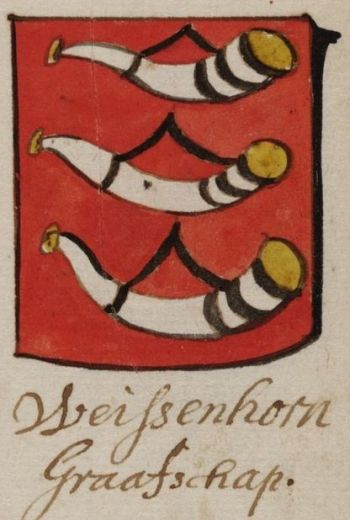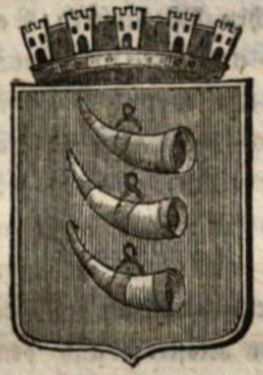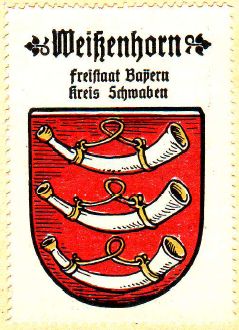Weissenhorn
WEISSENHORN
State : Bayern
District (Kreis) : Neu-Ulm
Additions : 1970 Biberachzell, Bubenhausen, Oberreichenbach; 1971 Emershofen, Oberhausen, Wallenhausen; 1972 Attenhofen, Grafertshofen; 1978 Hegelhofen
| German | In Rot übereinander drei waagrechte, linksgewendete silberne Jagdhörner mit goldenen Beschlägen und verschlungenen goldenen Schnüren. |
| English | blazon wanted |
Origin/meaning
Weissenhorn received city rights in the end of the 13th or early 14th century from the Neuffen family. The oldest known seal dates from 1338 and is probably made under the reign of Berchtold von Neuffen, Count of Marstetten and Graisbach. The seal shows the three horns, as do all later seals. The arms have thus not changed since, except the position of the horns, which changed from facing right to the present facing left The colours are known since 1516 and have not changed since either.
The arms in the Wapen- en Vlaggenboek van Gerrit Hesman (1708) |
The arms in Kramer (1841) |
| The arms by Hupp in the Kaffee Hag albums +/- 1925 |
The horns are canting (white-horn or Weissenhorn), but are also derived from the arms of the Neuffen family, who used three silver horns in black.
The arms were also taken as such in the arms of the famous Fugger family, when they acquired the county in 1507.
| The arms of the Fugger family as Lords of Weissenhorn and Kirchberg (source). |
Literature: Stadler, 1964-1971, 8 volumes.




